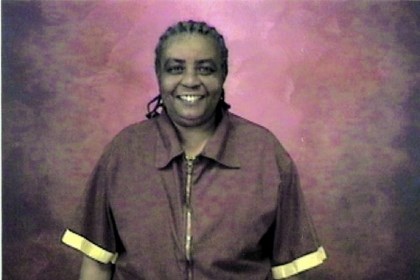
Women serving time at SCI-Muncy Prison in Pennsylvania
The Commonwealth of Pennsylvania has two state prisons for women, Cambridge Springs and Muncy; both are named after the town in which they are located. Cambridge Springs is in the far northwest and Muncy in the central region; there is no such facility for the place where most prisoners come from, southeast, specifically, Philadelphia. That says a lot right there, but I will not be commenting on the hardship for visitation this places on family, friends, the potential for educational opportunities and advocacy, the lifeblood of the women. Muncy houses the prototypical prison within the prison: the Restricted Housing Unit (RHU), which I recently visited.
To enter the RHU, one goes through a locked gate before being buzzed inside. Upon entering, you immediately get a sense of being hermetically sealed: no sounds or smells from outside, no feeling of fresh air. There are four “pods” that are triangular shaped, two on each side of the wide, sterile hallway. From the center of the RHU and above is the interior Correctional Officers watchtower, or “bubble”. There is no long line of cells that would justify being called Death Row; Death Triangle would be more appropriate. However, the two capital cases are housed next door to each other, so there is a mini-death row within one RHU pod. The two women sentenced to death are no different in their crimes than some women serving life; they just had very different judges. Inside this pod is a small multipurpose room where only they can watch TV and do arts and crafts. There is a yard connected to each pod: it is concrete with a chain link roof, perhaps to provide shade. The RHU doesn’t have tables and chairs for the women to eat or socialize. Food is delivered through the wicket, and socializing is done by screaming through the doorjamb. There is one flat screen TV on the wall, which would be very difficult to view through the small, narrow window on the cell doors. Counseling is done inside of a phone booth size, wire mesh cage; the woman sits inside this cage to receive her therapy. Each woman is in a single, solitary cell. Visitation is used as a behavioral management tool. If they act up, visitation is withheld. If a woman is reluctant or refuses to leave her cell, the correctional officers have two choices: either leave her in the cell to suffer or forcibly remove her. The correctional officers usually take the path of least resistance and do nothing. If they do get a visit, or if they are allowed a visit, it is done behind plexiglass via a phone. After the visit, the women are strip searched. It has hard to imagine why the need for a strip-search; they wear an orange jumpsuit and are handcuffed and chained are around the feet.
One pod is completely empty. It houses the Young Adult Offenders, (YAO). It is currently being transitioned into a DTU: Diversionary Treatment Unit. It is no different than the RHU pods, except for a small fitness room and the tables and chairs in the center of the pod. I say leave it empty.
In one of the pods is confined Miriam White, who in 1999, at the age of 11, stabbed a complete stranger to death in Philadelphia. Miriam was sent to various institutions before landing in Muncy. I could barely see Miriam through her window, because on it, she was finger painting with her feces, slowly, deliberately and trance-like.
Long-term confinement can last many years in the RHU. It’s mind boggling why the prison system doesn’t realize that their methods and policies are failing the women. On this particular day, I saw no therapy being conducted. No visits were taking place. No activity was taking place outside of the cells. And that was no coincidence. Sadly, it was just another day in the RHU.
(For more information on the RHUs in Pennsylvania prisons, check here for the class action lawsuit that the Disabilities Rights Network of Pennsylvania filed and won. For results of the lawsuit and the Pennsylvania Department of Corrections response, check here. And here’s the Pennsylvania Department of Corrections Access to Mental Health Services Handbook.)
(Photo Credit: Let’s Get Free: The Women and Trans Prisoner Defense Committee)
